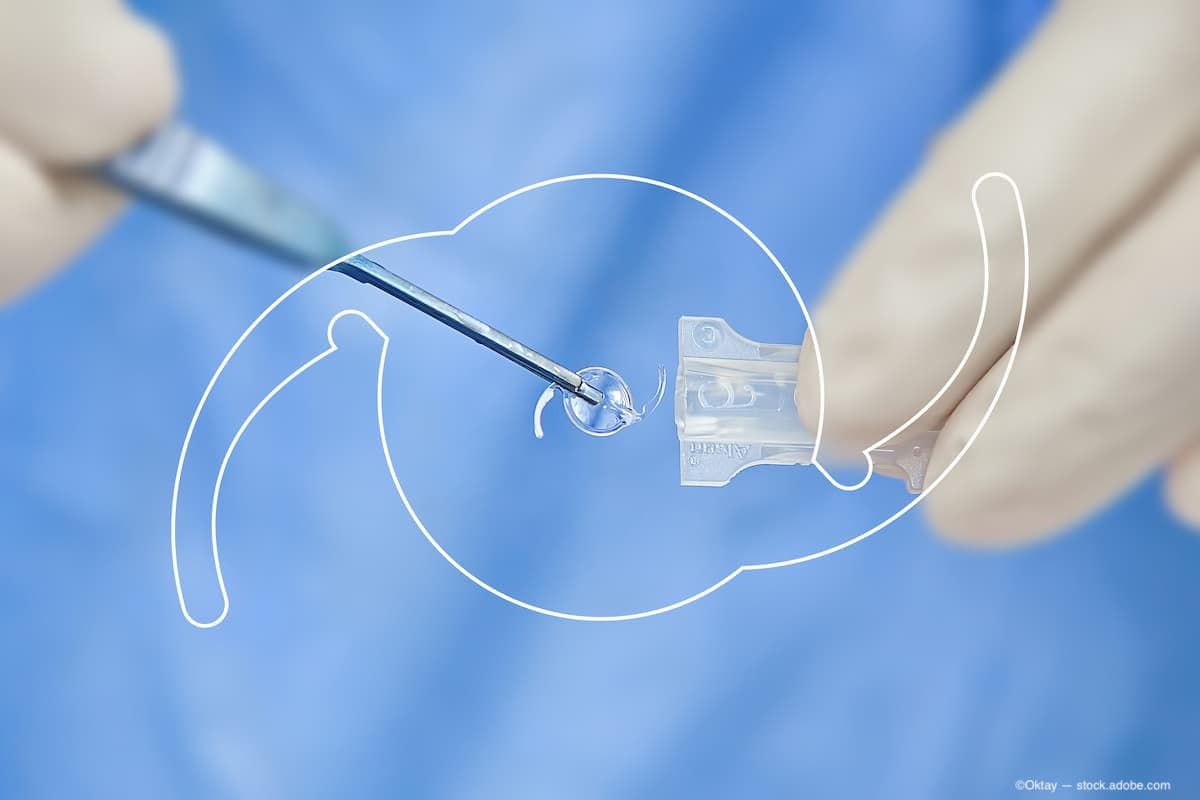Article
Staar Surgical announces FDA approval of its implantable collamer lenses
Author(s):
The EVO/EVO+ Visian Implantable Collamer Lens provides visual freedom independent of contact lenses and glasses.

Staar Surgical Co. today announced that the FDA has granted approval of the EVO/EVO+ Visian Implantable Collamer Lens (“EVO”) for the correction of myopia and myopia with astigmatism. Myopia, which is also known as nearsightedness or the need for distance vision correction, is the most common vision disorder globally and its prevalence is rapidly growing.1
An estimated 100 million U.S. adults ages 21 to 45 who have myopia are potential candidates for EVO, a biocompatible implantable lens that corrects distance vision.2
"Following FDA approval, prospective patients in the US and their doctors may now consider EVO for achieving visual freedom from the limitations, ongoing maintenance and inconvenience associated with glasses and contact lenses,” Caren Mason, president and CEO of STAAR Surgical, said in a statement
Mason noted that more than 1 million EVO lenses have already been implanted by doctors outside the US and 99.4% of EVO patients in a survey have stated they would have the procedure again.3 The EVO lens is additive, provides excellent quality of vision day and night, does not cause dry eye syndrome and is removable by a doctor, if ever so desired.4,5,6
“Sales of EVO lenses outside the U.S. increased 51% in 2021 and have more than doubled since 2018, which speaks to the increasing choice by patients and our surgeon partners for EVO as the premium and primary solution for refractive vision correction,” Mason said. “Surgeons will be trained and certified for EVO, and begin implanting EVO in the coming days and weeks in select cities. Commercialization of EVO in the U.S. will begin immediately and be supported by a nationwide advertising, marketing and public relations campaign.”
According to the company, STAAR’s EVOs are implanted within the posterior chamber of the eye directly behind the iris and in front of the natural crystalline lens. Earlier versions of the Visian ICL lens in the U.S. required a preoperative peripheral iridotomy that is now eliminated with EVO, thereby optimizing patient comfort and time efficiency for both the surgeon and the patient. EVO offers a lens-based alternative for the correction/reduction of refractive error in people who currently use glasses and/or contact lenses for distance vision correction. A U.S. multicenter, prospective clinical investigation confirmed the safety of the EVO family of myopia lenses.
There are now more than 100 clinical papers available discussing the safety and efficacy of the Visian ICL family of lenses globally, according to the company.
Scott D. Barnes, MD, chief medical officer of STAAR Surgical, said in a statement the EVOs are an option to glasses, contact lenses or laser vision correction.
“Today’s announcement is especially important because the prevalence of myopia is increasing quickly, and COVID precautions have presented additional challenges to people wearing glasses and/or contact lenses,” he said. “EVO adds an important tool for the ophthalmic surgeon seeking to help improve a patient’s quality of life. Different from LASIK, the EVO lens is added to the patient’s eye through a relatively quick surgical procedure where there is no removal of corneal tissue. Moreover, the EVO lens is removable by a doctor if ever desired. Results from our recent U.S. clinical trial are consistent with the more than one million EVO lenses that have already been implanted around the world.”
The company noted that the EVO Visian ICL (Implantable Collamer Lens) is indicated for use in phakic eye treatment in patients 21to 45 years of age: for the correction/reduction of myopia in patients with spherical equivalent ranging from -3.0 D to -20.0 D at the spectacle plane:
- for the correction/reduction of myopic astigmatism in patients with spherical equivalent ranging from -3.0 D to -20.0 D with cylinder of 1.0 D to 4.0 D at the spectacle plane;
- with an anterior chamber depth (ACD) of 3.00 mm or greater, when measured from the corneal endothelium to the anterior surface of the crystalline lens;
- and a stable refractive history (within 0.5 D for 1 year prior to implantation).
References
1 Holden BA, Fricke TR, Wilson DA, et al. Global Prevalence of Myopia and High Myopia and Temporal Trends from 2000 through 2050. Ophthalmology. 2016.
2 Market Scope, Refractive Surgery Report, 2019 and Company estimates. Company estimates that more than one in three of the 330 million U.S. population is between 21-45 years old with myopia greater than -3.0 D and has the willingness to undergo an EVO procedure, the financial ability to pay for EVO and is relatively close in terms of distance to a certified surgeon.
3 Packer, The Implantable Collamer Lens with a central port: review of the literature, Clinical Ophthalmology, 2018.
4 EVO/EVO+ ICL DFU and PIB.
5 Martinez-Plazs E, Lopez-Miguel A, Lopez-De La Rosa A, et al. Effect of the EVO+ Visian Phakic Implantable Collamer Lens on Visual Performance and Quality of Vision and Life, Am J Ophthalmol 2021;226: 117–125.
6 Naves, J. Carracedo, G. Cacho-Babillo, I. Diadenosine Nucleotid Measurements as Dry-Eye Score in Patients After LASIK and ICL Surgery. Presented at American Society of Cataract and Refractive Surgery (ASCRS) 2012.





